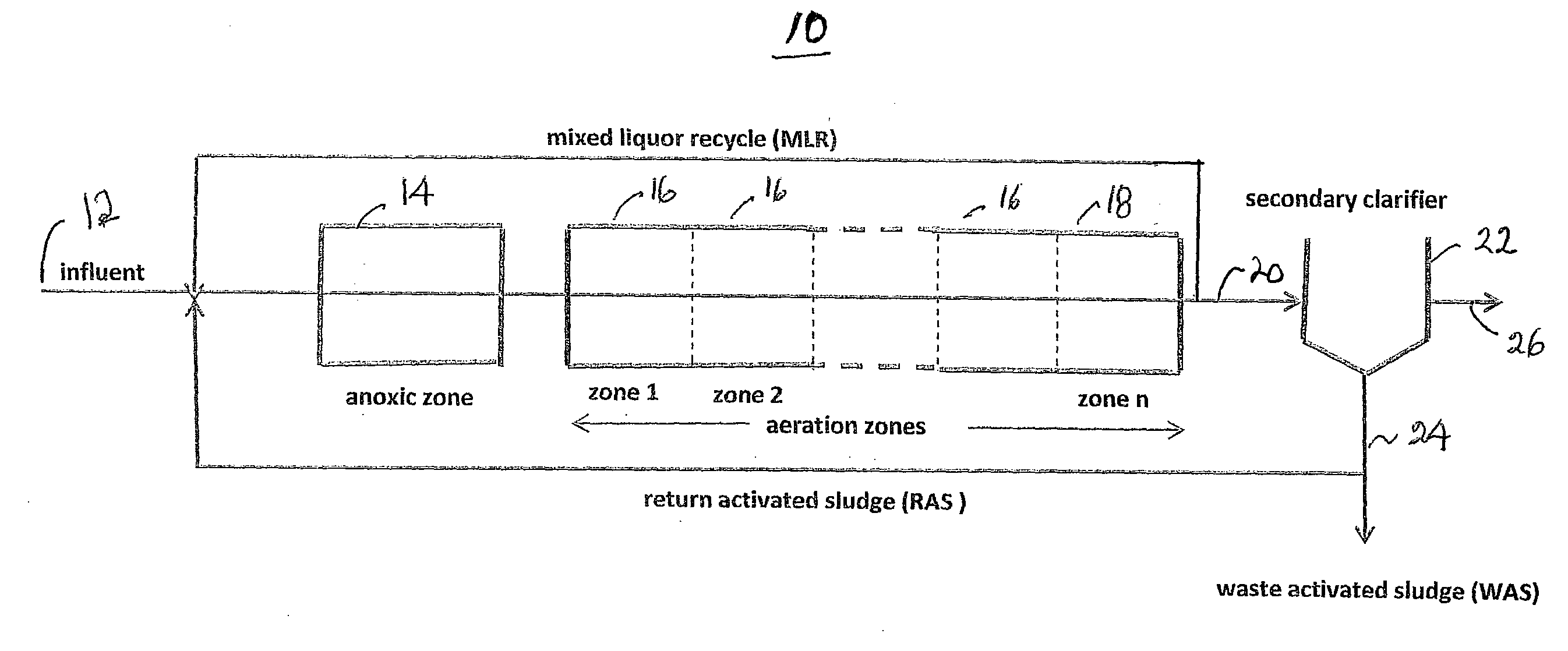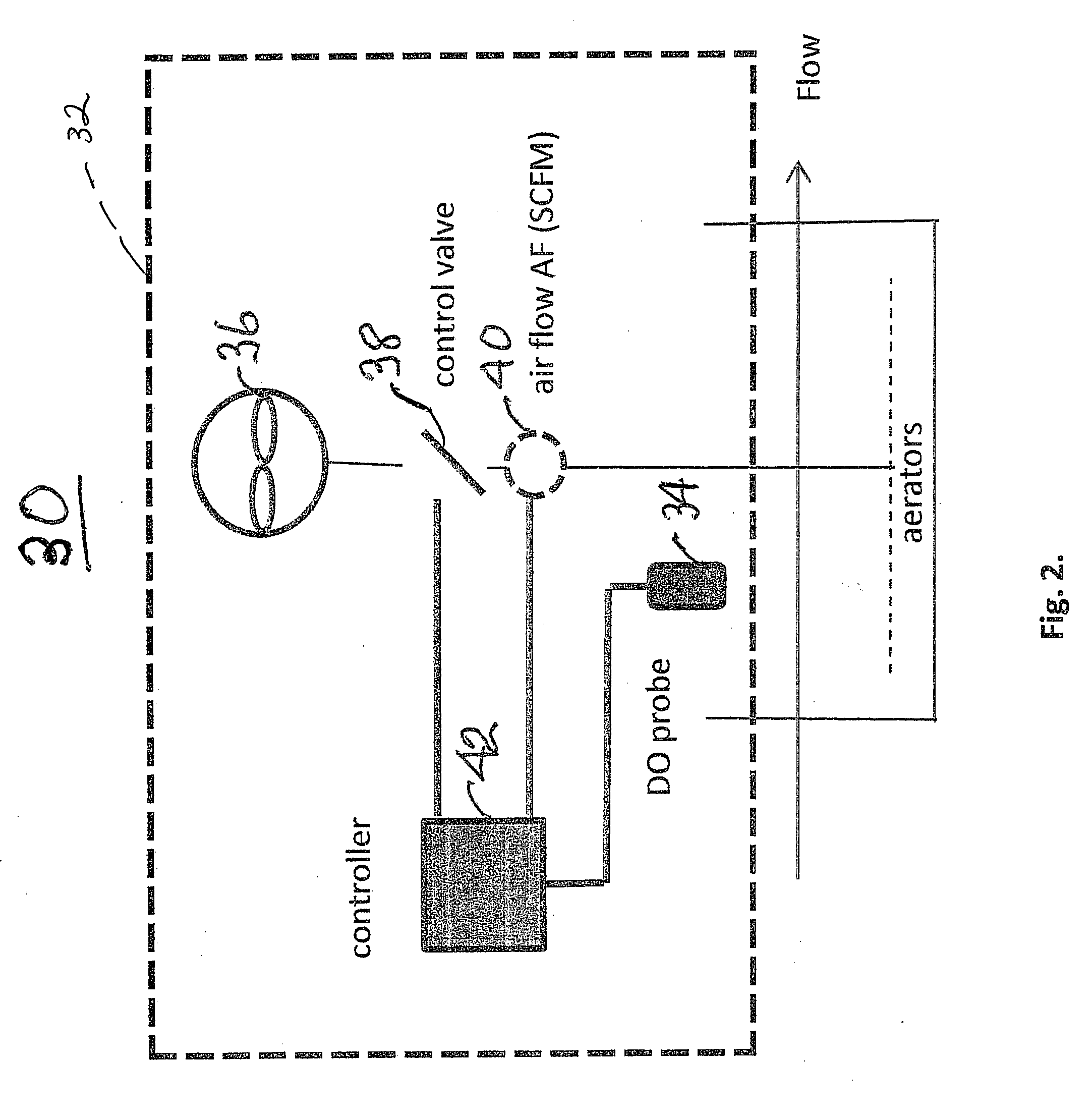Method and apparatus for monitoring biological activity and controlling aeration in an activated sludge plant
- Summary
- Abstract
- Description
- Claims
- Application Information
AI Technical Summary
Benefits of technology
Problems solved by technology
Method used
Image
Examples
Embodiment Construction
[0032]Referring now to the drawings and the illustrative embodiments depicted therein, an activated sludge wastewater treatment plant 10 is shown in FIG. 1. Waste is fed to an influent line 12 from an upstream supply, such as a primary clarifier effluent, and is supplied to a conventional anoxic zone 14. The effluent of zone 14 is supplied to a tandem series of aeration zones 16, which are designated zone 1, zone 2, . . . zone n in the direction of flow of the mixed liquor (primary effluent plus return activated sludge plus mixed liquor recycle). Each of the zones receives mixed liquor from an upstream zone and discharges mixed liquor to a downstream zone. In the aeration sections of an activated sludge process, air is bubbled through the mixed liquor. This provides the dissolved oxygen that certain species require in order to use the carbon compounds and ammonia present in the mixed liquor. The output 20 of final aeration zone 18 is recycled to influent line 12 in the form of mixed...
PUM
 Login to View More
Login to View More Abstract
Description
Claims
Application Information
 Login to View More
Login to View More - R&D
- Intellectual Property
- Life Sciences
- Materials
- Tech Scout
- Unparalleled Data Quality
- Higher Quality Content
- 60% Fewer Hallucinations
Browse by: Latest US Patents, China's latest patents, Technical Efficacy Thesaurus, Application Domain, Technology Topic, Popular Technical Reports.
© 2025 PatSnap. All rights reserved.Legal|Privacy policy|Modern Slavery Act Transparency Statement|Sitemap|About US| Contact US: help@patsnap.com



